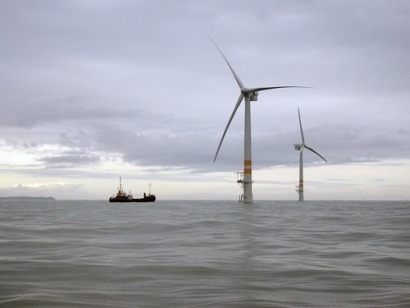
The obstacles may arise from possible disturbances in the operation of surveillance radars and the solution would be to provide an additional radar for the Finnish Defence Forces. This would ensure the functioning of territorial surveillance while also allowing the construction of wind power projects in areas with favourable wind conditions. The Finnish government has now moved to try and remedy the situation by introducing a special government bill which was submitted on May 23rd 2013.
The bill includes a proposal on the first wind power development area in the Bay of Bothnia which encompasses 2,425 square kilometres off the Finnish coast in the municipalities of Hailuoto, Lumijoki, Raahe, Siikajoki and Pyhäjoki. Advanced plans for the construction of more than 160 turbines have already been produced. Most of these plans however, lack a statement from the Finnish Defence Forces confirming that there will be no disturbance to surveillance systems. The lack of clarification on this matter so far has resulted in a delay in investment in wind power which amounts to hundreds of millions of euros.
Finland has areas with favourable wind conditions but the effects on radar are the principal reason for delay. In order to obtain a construction permit for a wind farm, the developers require a statement from the Defence Forces confirming that the wind farm will not disturb the statutory duties of the Defence Forces under normal or abnormal conditions or in a state of emergency.
Wind power developers wanting to construct wind farms in the Bay of Bothia must pay a compensation fee of 50,000 euros for each turbine making up a total compensation fee of 18.5 million euros. If the compensation sum is exceeded any excess will be returned to the wind power producers. The payments themselves will be paid to the Energy Market Authority which also manages the Feed-in Tariff system for wind power. The state will participate in the financing of the projects from the early stages of development thereby enabling the acquisition of an additional radar by the Defence Forces during the summer. The aim is to enable the wind farms to commence operations by 1st January 2014.
The Finnish government is aiming to generate a rapid increase in the use of wind power with a target of 6 terawatt hours by 2020. This would require the construction of around 700 new turbines and a capacity of 2,500 megawatts. The government’s Energy and Climate Strategy sets a goal of around 9TWh by 2025 with over 1TWh in the Bay of Bothnia by 2020.
Further information:

